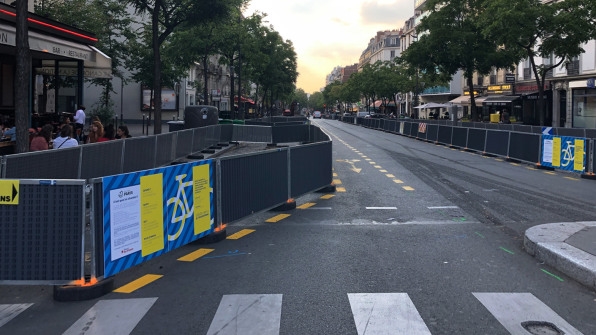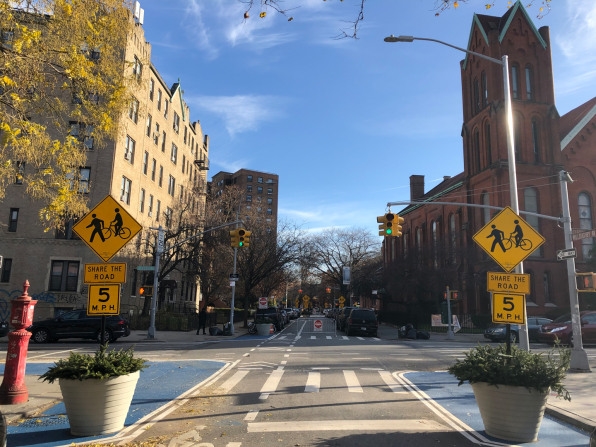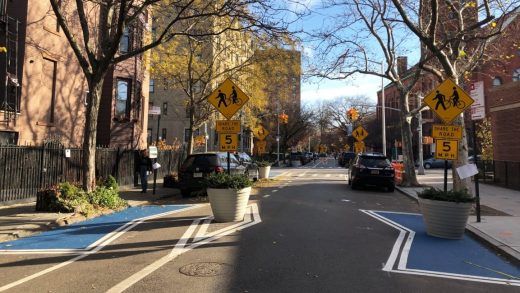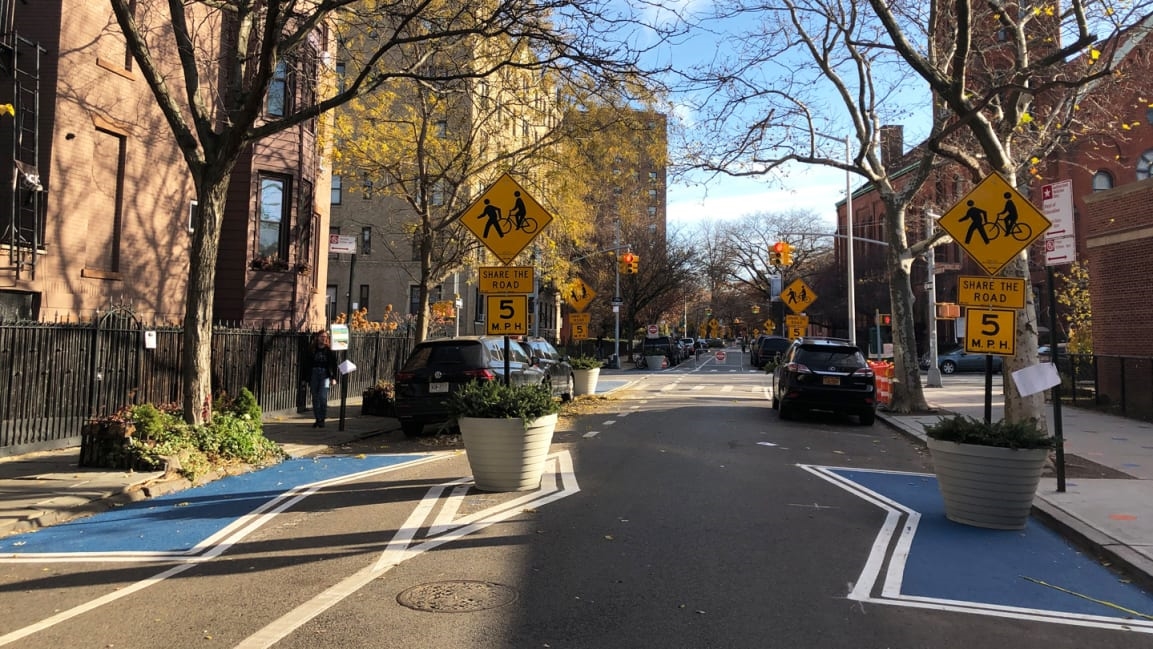COVID forced cities to redesign their streets. Now, some of those changes are permanent
In March 2020, as the COVID pandemic spread and people started to avoid subways, Berlin began adding pop-up bike lanes to city streets, adding plastic barriers and spray-painting bike symbols on former parking spaces. In September 2021, those lanes became permanent. “It took a year to change this from a pop-up bike path to a permanent one, and that is sensationally fast,” Monica Herrmann, mayor of the Friedrichshain-Kreuzberg district where the first lanes were added, told Euronews.
Globally, more than 200 other cities launched similar programs early in the pandemic, rethinking how streets could be better used by people on bike or foot. Some roads closed to cars. Some parking spaces turned into outdoor dining. Other cities lowered speed limits, or gave out free bikes, or, in at least one case, experimented with one-way sidewalks to help with social distancing. Not all of the changes have lasted—and since the pandemic still hasn’t ended, it’s still too early to judge how many will ultimately stay in place. But there are also already examples of permanent change.

In New York City, an Open Streets program that gives pedestrians and cyclists priority on some streets—with limited access for parking, deliveries, emergency vehicles, and a few other exceptions—is now permanently in place. On part of Willoughby Avenue in Brooklyn, for example, paint on the street marks out “curb extensions” that expand the sidewalk, with large planters in place to keep cars out of the area. In the narrow lane left for cars, large signs list the new speed limit: five miles an hour. The city’s Open Restaurants program, which carves out space on the street for outdoor dining, is also now permanent.

In Paris, 31 miles of bike lanes called “coronapistes” that were launched early in the pandemic and initially announced as temporary are now also permanent, with new concrete and landscaping infrastructure separating the lanes from car traffic. Paris now plans to add 112 miles of separated bike lanes between now and 2026; the pandemic sped up a larger transition from cars that was already underway.
Similar programs didn’t work everywhere. In Berkeley, California, a “Healthy Streets” program designed to limit traffic on some streets recently ended. The implementation was awkward, with confusing signs (residents didn’t know if they could drive past barriers on their own blocks), and lightweight barriers that ended up getting stolen or moved.
“All we are is dust in the wind…” pic.twitter.com/jseb5dtcEi
— Jef Poskanzer (@jefposk) December 1, 2021
The program wasn’t well-funded. The streets didn’t connect to form a network that someone could use to get across the city, the way that advocates had proposed. Still, the city can take lessons from the program as it makes plans for the next iteration of its bike network. And on one street, another pandemic intervention—three traffic circles to slow down cars at intersections—survived.
“They were low cost, and those are staying in place,” says Liza Lutzker, a coordinating committee member at Walk Bike Berkeley, a volunteer organization that advocates for safer streets for pedestrians and cyclists. “In the past, there had been discussions of putting traffic circles in there and neighbors were not that excited about it. But then once the temporary ones were put in, neighbors were really happy.” It’s an example, she says, of how cities can quickly test an idea cheaply, make changes if needed, and gain support from residents, without the usual drawn-out process of planning.
“I think that the muscle that cities have for reacting quickly—and learning how to do that, when to do it, how to talk about it—I think that muscle got much more fully developed during COVID,” says Harriet Tregoning, director of the New Urban Mobility Alliance, a global group of cities, mobility services, NGOs, and advocates working to disrupt urban transport. “That is a very important thing. Transportation-related interventions in the U.S. are very subjected, typically, to all kinds of environmental analysis, all kinds of very extensive planning, and budgeting a lot of interventions, when they’re permanent, can be pretty expensive.”
Cities are beginning to adopt the faster cycles of iteration that are more common in startups, Tregoning says. “When you’re bringing products to market, you do a beta test, you have a cycle,” she says. “[When] cities have typically rolled out new infrastructure, they might do you know, a four- or five- or 10-year process…and then you’re locked in, right? So I think this way of learning on the fly as things change is a really positive thing.”
Advocates for more walkable, bikeable cities can take lessons from what’s worked well in COVID-related redesigns, says Mike Lydon, principal at Street Plans, a design firm that focuses on tactical urbanism. Outdoor dining programs were successful in part because “everybody eats but not everybody bikes,” he says. “As much as advocates can find ways that these changes appeal to a broader audience, those tend to have more success.” When cities talked about open streets as something that everyone can use, programs had more support. “I think smart cities were able to speak to people not by their vehicle choice, but rather speak to them as people who do different things—they like to walk, they like to sometimes be on bicycles,” says Tregoning.
Street designs need to change for reasons beyond the pandemic, of course. “More than half of all trips in the United States today are three miles or less,” she says. “Most of those trips are taken by automobile. So if we could only get those trips to be taken by walking, bike or transit, we’d be healthier. And our carbon emissions would be so much less.”
Fast Company , Read Full Story
(28)



